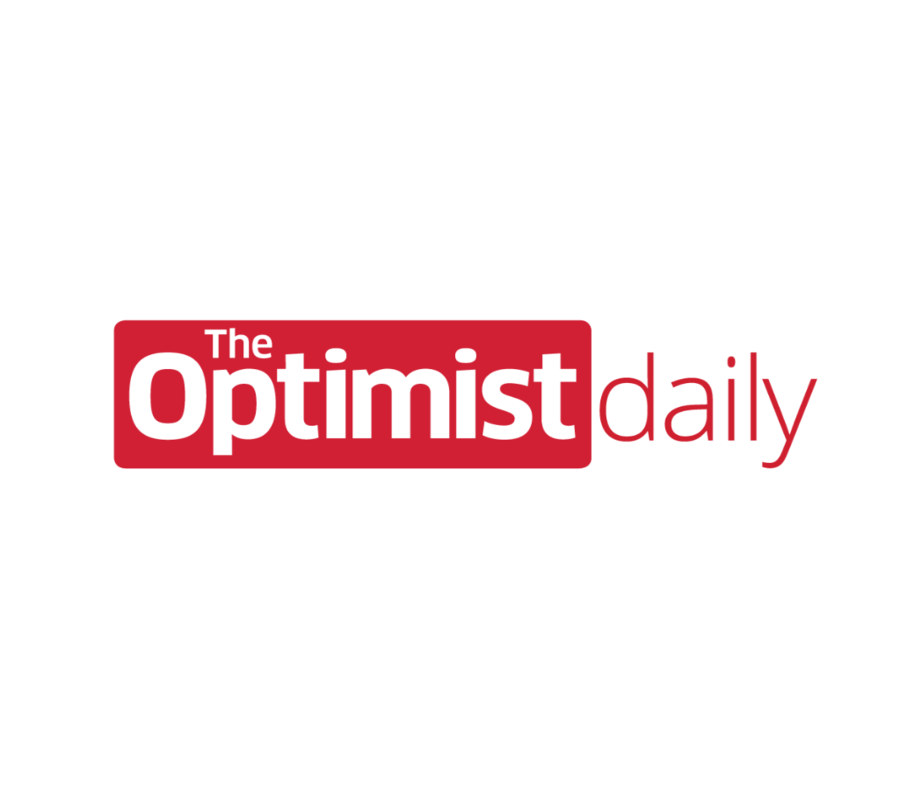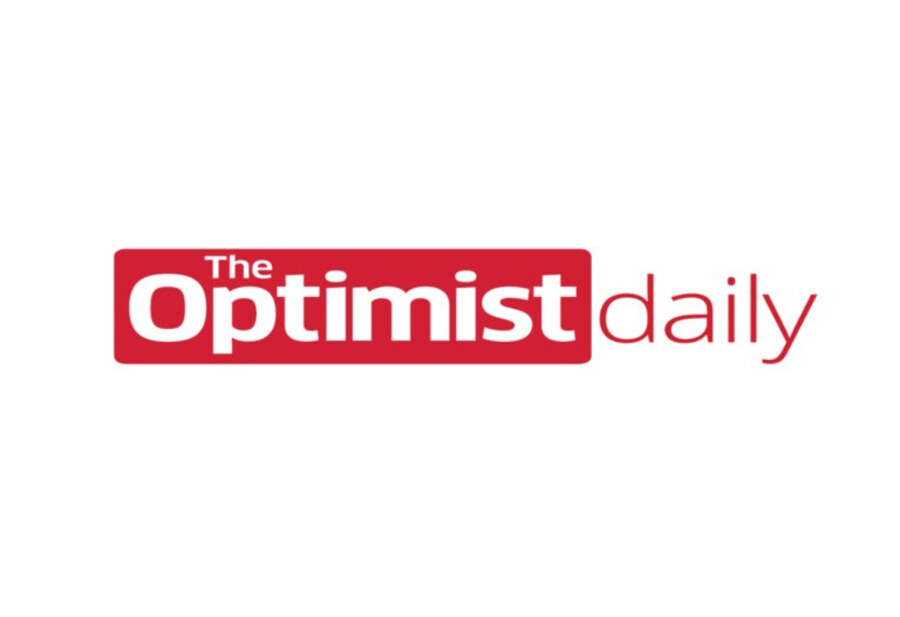From The Intelligent Optimist Magazine
Winter 2017
It sounds unbelievable: a court where citizens can bring complaints against their own governments. But that’s just what happens at the European Court of Human Rights in Strasbourg, France. Can thissuccess story be repeated on a global level?
By Jay Walljasper
The plight of 5-year-old Tabitha Kaniki Mitunga sparked international controversy in 2002 when Belgian officials detained her alone at an immigration centre for two months. Tabitha was then deported back to the Democratic Republic of the Congo, where she found no family members waiting for her at the airport. Imagine how terrifying all this felt to a little girl hardly old enough to read.
This sad story began at the Brussels airport when immigration officers determined Tabitha did not possess the appropriate papers to enter Belgian territory. She was travelling from the Congo with her uncle, a Dutch citizen, who was looking after her until she could join her mother, who had moved from the Congo to Canada as a refugee. The uncle soon returned to the Netherlands. After news of Tabitha’s detention and deportation spread, the Belgian and Canadian prime ministers finally intervened so the girl could be reunited with her mother in Montreal. But this happy ending doesn’t wash away the cold facts of the case. How could a small child be treated that way? We can only throw up our hands, and bemoan the lack of compassion and common sense shown by bureaucrats rigidly following their rule books.
But Tabitha’s mother did something more than that. Because the incident happened in Europe, Pulcherie Mubilanzila Mayeka was able to bring her daughter’s grievance before the European Court of Human Rights (ECHR)—a special judicial body upholding the European Convention on Human Rights, a 1950 treaty now signed by 46 nations.
On a sunny morning this winter, Mubilanzila Mayeka sat quietly beside her Belgian lawyer at the European Court of Human Rights headquarters in Strasbourg, France, as judges from Cyprus, Norway, Azerbaijan, Luxembourg, Croatia, Greece and Russia considered her case. Tabitha’s family charged that Belgian officials violated Article 3 (prohibition of inhuman and degrading treatment), Article 5 (right to liberty and security), Article 8 (respect for private family life) and Article 13 (right to an effective remedy) of the European human-rights treaty. An attorney for the Belgian government wearing formal dark robes and accompanied by five colleagues nervously tried to explain why this case, although out of the ordinary, defied no sections of the treaty. Outside the courtroom, Tabitha—in pigtails, white tights, and a bright new jumper—bounced around the lobby with the energy that only an 8-year-old can muster.
Tabitha, her family and Belgian immigration authorities are now awaiting the court’s decisions. So are government officials throughout Europe, who may need to revise their own regulations and practises in light of the court’s findings in this case.
The European Court of Human Rights is like no other court in the world, starting with the building itself. While most courts aim to impress or even intimidate you with their dignity and decorum, the ECHR is brashly different. At first sight, it looks like a children’s museum, with a see-through lobby and playful swirls of metal tubing painted bright red, blue and white. Glass is the court’s overriding architectural theme; even the stairs are fashioned from thick blocks of it, obviously making a statement about transparency in legal proceedings.
Even more unique is the basic premise of the court: that individuals have the right to bring human-rights cases before these judges if they believe that justice has not been served in national courts—even going so far as to challenge the rulings of their own governments. Equally startling is the way the court works: Judges from across Europe pass judgment on the actions or laws of a nation, and that nation must abide by their ruling. This seems astonishing in an era when the world’s dominant power, the United States, acts as though it is not bound by any treaty or convention, and routinely defies judgments of international bodies.
The ECHR can actually set policy for all of Europe, as happened last year in the case of British environmental activists convicted of libel in UK courts for passing out a flyer at a McDonald’s restaurant. Deciding the flyer’s assertions that McDonald’s exploits its workers and sells unhealthy food defamed the global fast-food chain, British courts ordered the activists to pay the corporation 40,000 pounds (59,000 euros; $70,000 U.S.) in damages.
After years of unsuccessfully contesting the decision in the British court system, the two activists brought their case to the European Court of Human Rights, which ruled in February 2005 that the McLibel case, as it came to be known, violated the European human-rights treaty’s guarantees of freedom of expression and right to a fair trial. The British government was directed to pay the activists 57,000 pounds (84,000 euros; $100,000 U.S.) in compensation. But the impact of the ruling goes far beyond that. The ECHR’s judges held that British libel laws restrict people’s rights to criticize corporations. The UK government is now obliged to reform its laws, and so will any other of the 45 European nations with similar limits on free expression in its law books.
The European Court of Human Rights has jurisdiction over every corner of Europe except the Vatican and notoriously corrupt Belarus. It plays a powerful role in creating continent-wide minimum standards on a wide range of issues ranging from freedom of religion and election procedures to property rights and family law.
Indeed, the European Court of Human Rights can be credited with transforming European society on a number of issues:
• Abolishing the death penalty, based on 1983 and 2002 revisions of the European Convention on Human Rights
• Confirming gay rights, based on judgments throwing out anti-sodomy laws in the UK and Ireland
• Expanding freedom of the press, based on a Danish case in which a reporter was charged with hate crimes simply for interviewing allegedly racist skinheads on television
• Establishing the precedent that European nations will not extradite criminal suspects to the United States if those people face the death penalty in American courts
• Outlawing excessive force by police, based on a French case
“It is quite revolutionary to say a court can overrule a national government,” says Henry Schermers, a retired law professor at the University of Leiden in the Netherlands, who has tracked the European court’s record for decades. “But no country likes to be accused of a human-rights violation. No government can say now that they don’t care about human rights. That gives the court real power.”
ECHR’s ability to enforce its decisions is linked formally to the Council of Europe, an umbrella organization of 46 nations that promotes co-operation across the continent. The court also counts on the media to give negative coverage of offending countries. The European Union, although not officially tied to the court, also plays a role in making sure its rulings are taken seriously. Prospective EU members with questionable human-rights records, such as Bulgaria and especially Turkey, understand compliance with the ECHR is critical for their acceptance into the EU.
Turkey has recently settled the court’s longest outstanding ruling after eight years of stalling. The case concerned the Turkish government’s illegal role in seizing property from ethnic Greeks on the island of Cyprus, which has been torn by divisions between Greeks and Turks.
Turkey stands as the nation with the most serious record of human-rights violations. Over the past five years it has been party to 41 out of 53 ECHR cases investigating deprivation of life, six of 16 cases involving torture and almost half of 136 cases involving inhuman or degrading treatment.
“Turkey is now doing quite a lot to implement the judgments of the court,” notes Egbert Myjer, the Netherlands’ judge at the ECHR. “Turkey in the past has used force, even murder against the Kurds. But they are making changes now.”
Russia comes in a distant second in serious infractions of human rights, and this year the court will hear cases arising from the brutal war in the breakaway state of Chechnya. Russia is also at the center of the court’s current biggest unsettled dispute, a 2004 case ruling that two people are being detained unlawfully in Trans-Dniester, a successionist province of Moldova largely under the control of the Russian army. The Russian Federation has made no effort to remedy the situation despite a second ruling from the court.
Italy is the state with the largest number of complaints against it, most involving cases where people’s rights were violated by lengthy waits for a trial. This has been a problem for more than 20 years, and ECHR officials are concerned about the lack of progress on this problem in Italian courts.
But overall, the court’s success in serving justice has been remarkable given its lack of direct power in carrying out decisions. Only a fraction of almost 6,000 judgments over the past 30 years have posed any problems in enforcement. ECHR president Luzius Wildhaber of Switzerland notes, “Despite being a thorn in their side, governments see us as a necessity.”
According to Wildhaber, the court’s biggest obstacle right now is the “inexorably rising tide of cases.” The backlog stands at 80,000, which means long delays in hearings and rulings. The Council of Europe, which sponsors the court, recently announced funding for 50 more lawyers to be added to the ECHR staff.
Terrorism poses another serious obstacle, Wildhaber explains. “Human rights are no longer seen as automatic in our time. The rise in terrorism and democratic government’s reactions to it both challenge human rights.”
The origins of the European Court of Human Rights go back to the shocked aftermath of World War II, when the whole world felt deep revulsion at the barbarity of the Nazis. Feelings ran high that nations themselves could not adequately protect human rights. Germany, after all, had commendable human rights laws on the books, but Hitler decreed the laws did not apply to Jews, the disabled and all others he deemed enemies of the Nazi regime. The United Nations had recently been launched with the powerful Universal Declaration of Human Rights at the core of its mission. But that was not a legally binding document, and many European leaders saw strong need for a human rights treaty that would have the force of law behind it. Thus, the European Convention on Human Rights was enacted in 1950. This treaty remains the foundation of all ECHR work.
In a series of rulings, which started off timidly in the 1950s but has grown more confident since the 1970s, the court has shaped a common set of human-rights policies for member nations. ECHR’s influence expanded greatly in the 1990s when governments from Eastern Europe and the former Soviet Union signed the treaty.
One of the key accomplishments of the court through its history has been to establish common principles on human rights in nations with very distinct cultural and legal traditions. This success in expanding human-rights protections across a continent with 46 nations and 800 million people is due in large part to the Margin of Appreciation Doctrine, which gives individual countries some flexibility in how they apply court rulings. The court keeps its focus on the outcomes of human-rights policies, not on the means used to achieve them.
Dutch judge Egbert Myjer notes that it is not always Southern or Eastern European nations that must be brought into line. “In the Netherlands, we thought we were in compliance with all parts of the treaty, and that the court was just for other people. But it turned out we needed help too. Rulings have brought changes in Dutch law around the right to hear witnesses in court, administrative law, family law, and psychiatric law.
“This court can be like a mirror where you can see yourself in new ways.”
A growing number of observers believe that now, as economic globalization ties the world together, it’s time for an international court to promote human rights all over the planet. Jean-Paul Marthoz, a Belgian foreign-affairs journalist and former international media director for the influential U.S.-based group Human Rights Watch, says, “The European Court of Human Rights is one of the best things to have come out of the long process of European integration. So much of the rest is simply about economic deregulation and privatization. The court, however, expands the idea of people’s rights. It’s a good model for regional legal institutions, and perhaps that could lead someday to a global court.”
Two other regional courts already exist: the African Court on Human and Peoples’ Rights, established in 1987 and based in Banju, Gambia; and the Inter-American Court of Human Rights, established in 1979 and based in San José, Costa Rica. The Inter-American Court encompasses 25 members, including nearly all Latin American nations, and some from the Caribbean, but not the United States or Canada.
ECHR officials maintain friendly ties with their counterparts on other continents, but many raise a skeptical eyebrow when the idea of a World Court of Human Rights is raised (see sidebar, “The universal dream of human rights”). “I think we are unique in the sense that the whole continent shares in these values,” is how ECHR President Luzius Wildhaber diplomatically responded to the suggestion at a press conference this year. Michael O’Boyle, one of the court’s four registrars, is even more candid. “It’s a very attractive idea but when you look at the difficulties which beset the UN today and prevent it from working properly, you see it’s a bit of pipe dream.”
Still, O’Boyle admits he’s been surprised by all that’s happened since 1977, when he first joined the ECHR after teaching law in Northern Ireland. At that time only 19 states had ratified the convention, all from Western Europe except Greece. Indeed, France, ever anxious about its sovereignty, had only joined three years earlier. “I would have never expected this court to become what it has,” he marvels.
Watching what the court has become over an even longer period of time, legal scholar Henry Schermers is optimistic about prospects for a world human-rights court. “The court has proved among European states that it works. It is a viable idea to do it on an international basis.”
This article was first published in Ode Magazine, April 2006.
_______________________________
The universal dream of human rights
A new organization sets out to fulfill the UN’s unfinished business
The dream of a World Court of Human Rights has been around for a long time. It was an idea Eleanor Roosevelt, René Cassin and others had in mind when drafting the 1948 Universal Declaration of Human Rights as part of the founding of the United Nations. (Cassin, a French lawyer, later became president of the European Court of Human Rights and won the Nobel Peace Prize in 1968. Roosevelt was, of course, the widow of U.S. president Franklin Roosevelt and a world-renowned humanitarian.)
But at the last minute Roosevelt and Cassin opted strategically for a declaration rather than a legally binding treaty. The treaty would never have passed in the face of opposition from Britain, which worried that a human-rights court would encourage revolt in its empire; the United States, which worried that its mistreatment of African-Americans would be exposed as an international scandal and the Soviet Union, which worried about world attention focusing on its restrictions of freedom of the press and religion.
The Commission on Human Rights, headquartered in Geneva, was created as the UN’s forum for human-rights issues, but many observers feel it’s become a debating society better known for politically charged arguments than significant action.
The European Court of Human Rights remains the best model for an international justice system, explains Kirk Boyd, an American human-rights lawyer who heads the International Convention on Human Rights—a non-governmental organization created to fulfill the dream of a worldwide human-rights treaty backed by an international court.
“I’m a lawyer, and I always carry a copy of the U.S. Constitution with me when I walk into court,” says Boyd, who has argued a civil-liberties case before the U.S. Supreme Court and was an advisor to Russian leaders on drafting a new Bill of Rights. “I want a document on human rights I can hold up in court and say, ‘It says right here…’
“That’s the beauty of the European Court of Human Rights,” he adds. “Lawyers from Russia and Portugal can hold up the same document, and it means something.”
The document Boyd envisions would enshrine the four freedoms outlined in the Universal Declaration of Human Rights: freedom of speech, freedom of religion, freedom from want and freedom from fear. And it would incorporate one of the guiding principles of the European Court of Human Rights—the Margin of Appreciation Doctrine, which gives nations some latitude in how they apply human-rights rulings to take into account cultural differences. “This built-in flexibility is what makes it work,” Boyd explains, “so human rights is not something simply imposed from above.”
The International Convention on Human Rights (ICHR), based in San Francisco, has prepared an introductory booklet that includes the Universal Declaration, the European Convention on Human Rights treaty and a first draft of the proposed global charter, which they will mail to anyone free. You can request the booklet and offer your own ideas on what the new global human-rights treaty should include at www.ichr.org. Calling the proposed document “a business plan for humanity,” ICHR has also developed a school curriculum, featuring the booklets and a 10-minute film, which teachers can get at no cost to present in classrooms around the world on Human Rights Day—December 10, the anniversary of the signing of the Universal Declaration of Human Rights.
More information: www.ichr.org
_______________________
An agreement to live together

Pockets of the world appear to be turning their backs on globalism. Brexit, the election of Donald Trump and other recent events indicate a pulling up of national drawbridges. And Dr. John Kirk Boyd, executive director of Unite for Rights, isn’t a bit surprised.
“We’re globalizing and so many people are being left out that they are rebelling against a system that should have benefited them,” he said. “Now they’re moving in a direction that’s worse for them.”
Boyd says that a key weakness with many globalization movements, such as free trade agreements, is that they’re not accompanied by a broad agreement on human rights. If one nation protects worker rights by prohibiting child and slave labor, setting minimum wages and requiring safe workplaces, and another doesn’t, reciprocity is almost impossible to achieve.
“Free trade has caused a backlash and for a good reason,” Boyd said. “You can’t have our workforce competing with theirs on a global basis, because it undermines their rights.”
Climate change is one of the few areas where large pockets of the world are forming a joint effort, perhaps because they see that almost all nations will suffer potentially catastrophic changes if green-house gas pollution isn’t curbed. But Boyd, author of “2048: Humanity’s Agreement to Live Together” and former executive director of the 2048 Project at the UC Berkeley School of Law, sees the potential for an even more basic kind of globalism: One based on commonly adopted human rights.
Thus 2048, the 100-year anniversary of the United Nations’ adoption of the Universal Declaration of Human Rights. With the memories of the Great Depression, the Holocaust and World War II fresh in their minds, a group including Eleanor Roosevelt and Nobel Prize winner Rene Cassin joined forces to create the declaration, which was drafted by Canadian legal scholar John Humphrey. It outlined such rights as freedom of expression and religion, equality before the law, humane working conditions and the fulfillment of basic needs such as adequate food and shelter.
But the declaration carried no force of law; it was presumed that this would happen at a future date. To a limited extent, that did occur just a few years later when European nations adopted the European Convention on Human Rights treaty, and established the European Court of Human Rights to enforce its guarantees. At the time, Humphrey wrote, “If the international community ever becomes really serious about human rights, the time will come when the European example will be followed on a universal scale.”
That’s where Boyd and his San Francisco-based Unite for Rights come in. He has drafted and redrafted a Global Bill of Rights that includes the kinds of phrases most Americans are (or at least should be) familiar with from the first 10 amendments to the U.S. Constitution. He’s woven in concepts from the U.N. and European documents and some additions that reflect modern concerns, such as the right to clean water and free education from preschool through college.
The document is now in its 11th version, revised each year. A universally accepted document cannot be the work of one person, a group of people or even a body of world leaders, he says. It has to be the work of everyone willing to contribute. That’s why he doesn’t just invite people to offer changes, additions and amendments; he’s offering to pay them for it. Make a meaty suggestion that is incorporated into the Bill of Rights and he’ll send $100. Come up with a better document altogether and it’s $1,000. (He even offered me $10 for the grammatical error I noticed in it.)
He recently received more suggestions from Israel, Palestine and the United Kingdom; they look good, he said, but he hadn’t yet had time to give them full consideration.
Beyond his willingness to be rewritten and edited by the world, Boyd has another key plan: For individuals, businesses and governments to sign on to the concept of a global bill of rights. Not the document itself for now, but just the idea that the fractured world must stand willing to stand up for the common humanity of all who share the planet.
“It’s going to take a global movement to deal with these global problems,” he said. “Otherwise we’ll have a dystopian future, with huge stratifications.”
What he wants to ask the world is: What’s the plan? How does humanity go forward?
“There’s still a vision out there contrary to Trump and the rest of it,” he said. “What needs to happen is for people need to think further about what kind of society we want to have as a global community.” | Karin Klein












